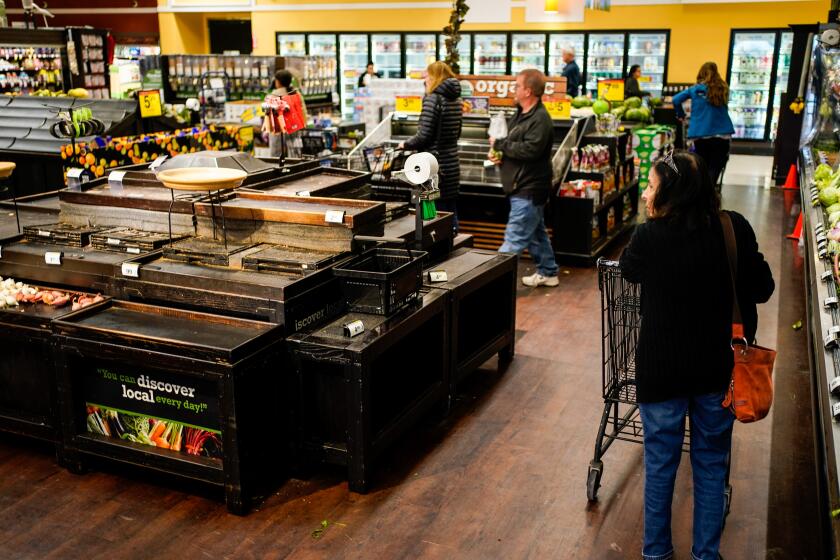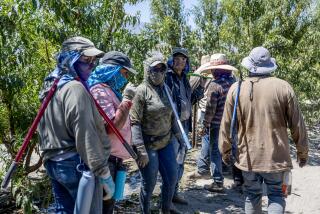What’s a city to do when half its population is in the crosshairs of coronavirus?
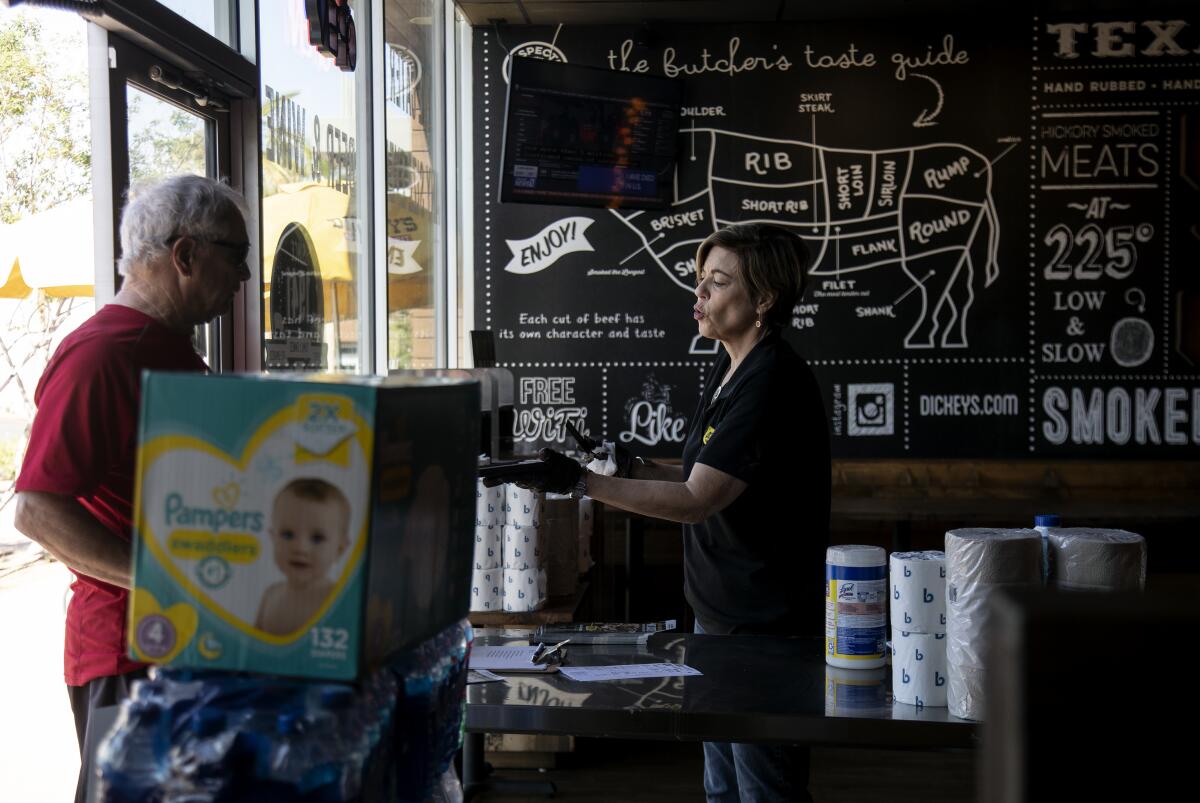
RANCHO MIRAGE, Calif. — It was a choice Lisa Weaver wished she didn’t have to make.
Keep her restaurant open. Risk contact with someone who has the coronavirus. Bring the disease home. To her doubly vulnerable partner, who is 68 and suffers from an autoimmune disorder.
Or close Dickey’s Barbecue Pit and risk losing her investment in the place — half the money she’d set aside for retirement. Weaver would have to lay off her remaining employees. For at least one, that paycheck means the difference between shelter and the street for her mother and younger siblings.
“I never thought I’d see something worse than summer,” Weaver said on a Sunday during high season in this resort and retirement hot spot. Summer’s when temperatures soar, tourists disappear and business evaporates here. “I bought this restaurant a year ago. It’s not something I’d do again, knowing what I know now.”
The Coachella Valley may be best known for music festivals, tennis tournaments and championship golf, but it’s also home to some of the densest concentrations of senior citizens in California — the very same people with the greatest risk of contracting the coronavirus simply because of the year they were born.
That fact has changed daily life here in dramatic fashion. Ten days before Gov. Gavin Newsom issued a stay-at-home order for the entire state, the Riverside County public health officer recommended that “those in the Coachella Valley who are elderly and have underlying conditions, including individuals who are HIV positive, limit non-essential travel and avoid large public gatherings.”
Dr. Cameron Kaiser’s targeted guidelines came just days after the county announced its first case of locally acquired COVID-19. Government and hospital officials did not identify the county’s “patient zero,” but she is believed to be an 83-year-old Rancho Mirage woman who was hospitalized on March 1, according to the Desert Sun.
Many retired snowbirds, who winter here to escape harsh weather, fled home while they were still able to travel. Seniors who volunteer throughout the region are sheltering in place, so the National Guard was called in to lend a hand at the valley’s regional food bank. The Rancho Mirage City Council has written $8,000 checks to help hard-hit restaurants survive. The main requirement? That they stay open for food delivery or curbside pickup through May 31.
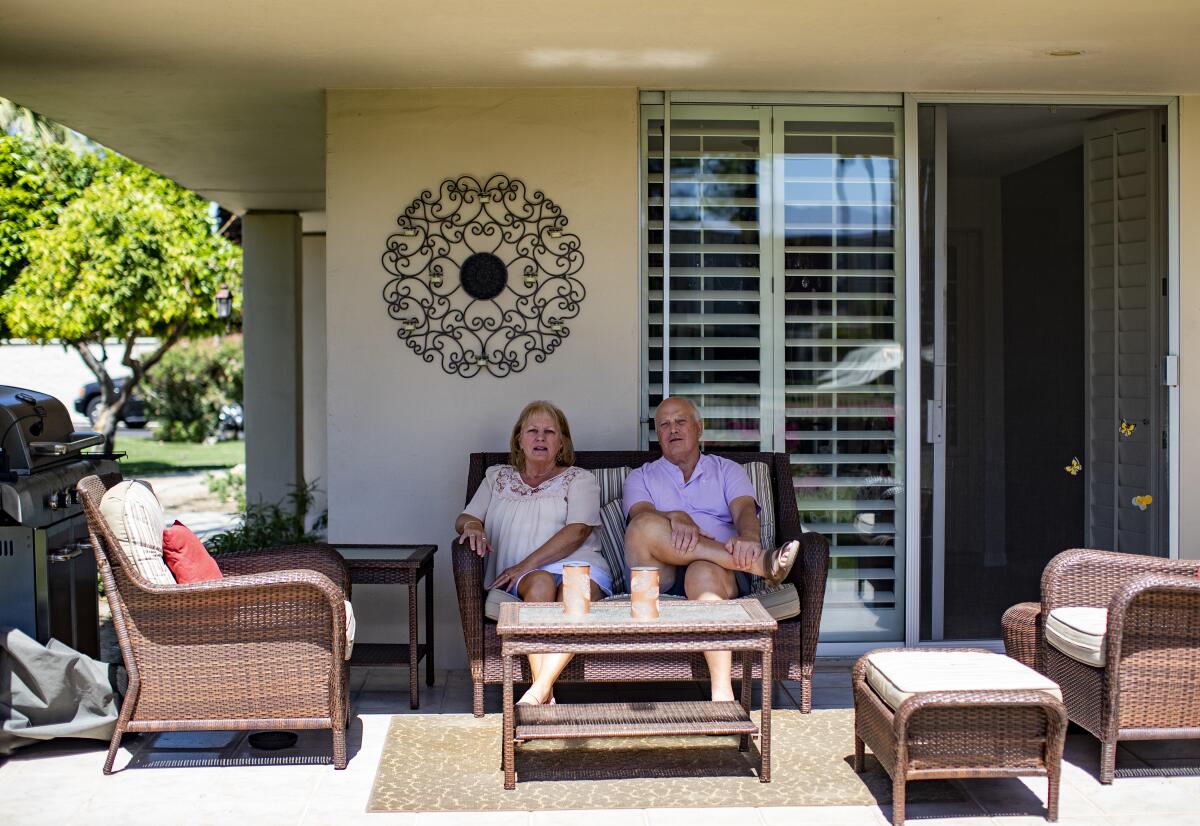
This rugged valley at the foot of the San Jacinto Mountains is home to three California’s cities with the highest percentages of residents age 65 and older: Indian Wells comes in at No. 2, with 59% of the population eligible for Medicare. Rancho Mirage is No. 3 with 53%; Palm Desert comes in at No. 8, with 34%. (Topping the list is Orange County’s Laguna Woods, almost all retirement housing, where 83% of the population is 65 and older.)
At the pandemic’s start, “our demographics were working against us to a certain extent,” said Dr. Alan Williamson, chief medical officer at Eisenhower Health in Rancho Mirage. Among the hospital’s first patients “were the country-club set that traveled, got together and showed up COVID positive. Then very quickly thereafter, it became a communitywide disease.”
Although many area seniors are fit, active and healthy, Williamson said, many “have diabetes, lung disease issues, heart disease issues. ... They’re the tail end of the World War II generation into the Korean War generation. A lot of smokers.”
Which means a lot of underlying conditions that make people vulnerable to the coronavirus. But Williamson credits the senior population with adhering to stay-at-home guidelines, helping to keep the region’s COVID-19 cases and deaths fairly stable in recent weeks.
On April 12, the Riverside County Public Health Department reported 373 COVID-19 cases and 17 deaths in the Coachella Valley’s nine cities; by Friday, nearly two weeks later , the number of cases had risen to 562, but only five new deaths had been reported.
Coronavirus spread sparks California to request 5.3 million senior citizens to stay home
“We’ve flattened the curve. These words have suddenly become what Americans long to hear ... And we can say it for our valley,” Eisenhower Health’s leadership wrote in an April 20 letter. “Thankfully, we’ve all been doing the right things, to the point where Eisenhower is now treating only five (5) inpatients for COVID-19!”
The virus’ impact, however, has been widespread here. Eisenhower Memory Care Center’s day-care program for people with Alzheimer’s disease and dementia was closed the week of March 16 “out of an abundance of caution.” The Rancho Mirage Chamber of Commerce canceled ribbon cuttings and business mixers and began offering Zoom seminars — “Stimulus Package Explained,” “Retail & Restaurant Rescue,” “Crisis Leadership.”

Golf courses were locked down for nearly three weeks, their vast green expanses inviting but untouchable. They were allowed to reopen on April 20 with strict limitations. Gated communities and country clubs have been shut tight. Even cars in grocery store parking lots appear widely spaced, as if to keep a kind of automotive social distance.
FIND Food Bank, which serves communities in a 5,000-square-mile swath of Southern California desert, has been particularly hard hit. Because so many people have been thrown out of work, the organization had to add 19 new mobile distribution sites.
“Seventy percent of our volunteer base, about 5,000 annually, are people over the age of 65,” said Debbie S. Espinosa, president of the Indio-based organization. “They’re seniors and retired. When shelter in place happened, we lost virtually all of our regular volunteers. To top it off, the amount of people we’re serving is 30% to 45% higher.”
The GoldenTalk senior chat and crisis line, launched by former Costa Mesa resident Kimberly Lewis, founder of the I Did Something Good Today Foundation, serves Californians 60 and older and has almost 200 volunteers.
About two dozen members of the National Guard have stepped into the breach, packing food in the warehouse, staffing the free community markets. And Cardiff Limousine is now delivering meals to about 75 elderly clients. It is a volunteer effort, Espinosa said. Sadly, it’s not as if the drivers have much else to do, mid-pandemic.
“People are coming to our lines that have never been to a food bank line before,” Espinosa said. “You’ll get a gentleman who says, ‘I’ll skip two days of eating so my kids won’t have to.’ People taking care of seniors who say, ‘I need to make sure my mom eats. I can no longer take care of both of us because my hours got cut by 75%.’ It’s hard. It really is.”
ACT for MS, which helps Coachella Valley residents diagnosed with multiple sclerosis, has been hard hit by the virus. The organization offers strength training, exercise programs and help with electric bills, along with other services. The annual March fundraiser has been rescheduled to December. Its exercise programs, which help assuage the disease’s impacts, have been suspended. Gyms have closed.
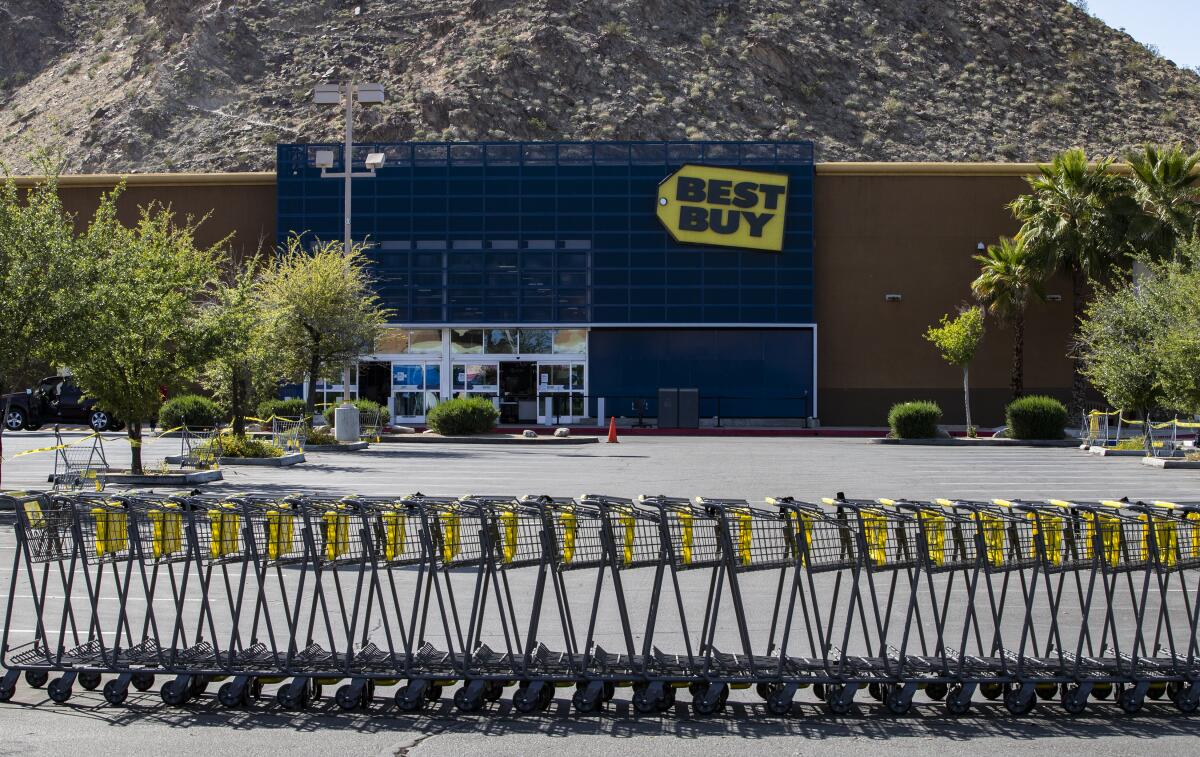
Julie Drouyor misses them desperately. The 54-year-old was diagnosed with MS in 1992. She took disability retirement from her job as a financial analyst with the University of California in 2016, as her pain increased and her ability to move and think plummeted.
In the winter, she and her husband live in a 330-square-foot recreational vehicle on the border of Rancho Mirage and Palm Desert. In the summer, they drive their home to Idyllwild. They can’t do that now, because of the stay-in-place orders. And Drouyor doesn’t have access to the adaptive yoga and aquatic exercise programs that help keep her mobile.
“I have to actually think about walking every step,” said Drouyor, who is immunocompromised. “I’ve been distracted before and fallen. ... That’s where the exercise with ACT for MS helps me. When you’re on disability, you don’t have the same opportunities. It costs quite a bit.”
Lisa Weaver stood behind a makeshift sneeze guard at midday in her barbecue joint. On a table to her right was a display of paper towels, bleach, toilet paper, Pampers and disposable gloves — restaurant staples she is selling to help make ends meet.
On the plus side, the $8,000 grant from the city of Rancho Mirage will help her pay her employees for the next month or two. On the minus side, it was lunchtime on a Sunday in the Coachella Valley’s high season, and there were no customers.
As she pondered how she’d live and still keep Dickey’s open, she talked about her plans to pitch in and help her community survive the difficult months of the COVID-19 pandemic.
“This week, we’re going to feed the National Guard and the volunteers at the food bank,” she said, with a bright smile. “They have to eat MREs [meals ready to eat] like they’re in Afghanistan.”
Weaver has donated meals to the California Highway Patrol and the staff at Eisenhower Medical Center’s COVID-19 unit. She’s helped feed the region’s homeless population and is scheduled to bring meals to grocery store workers.
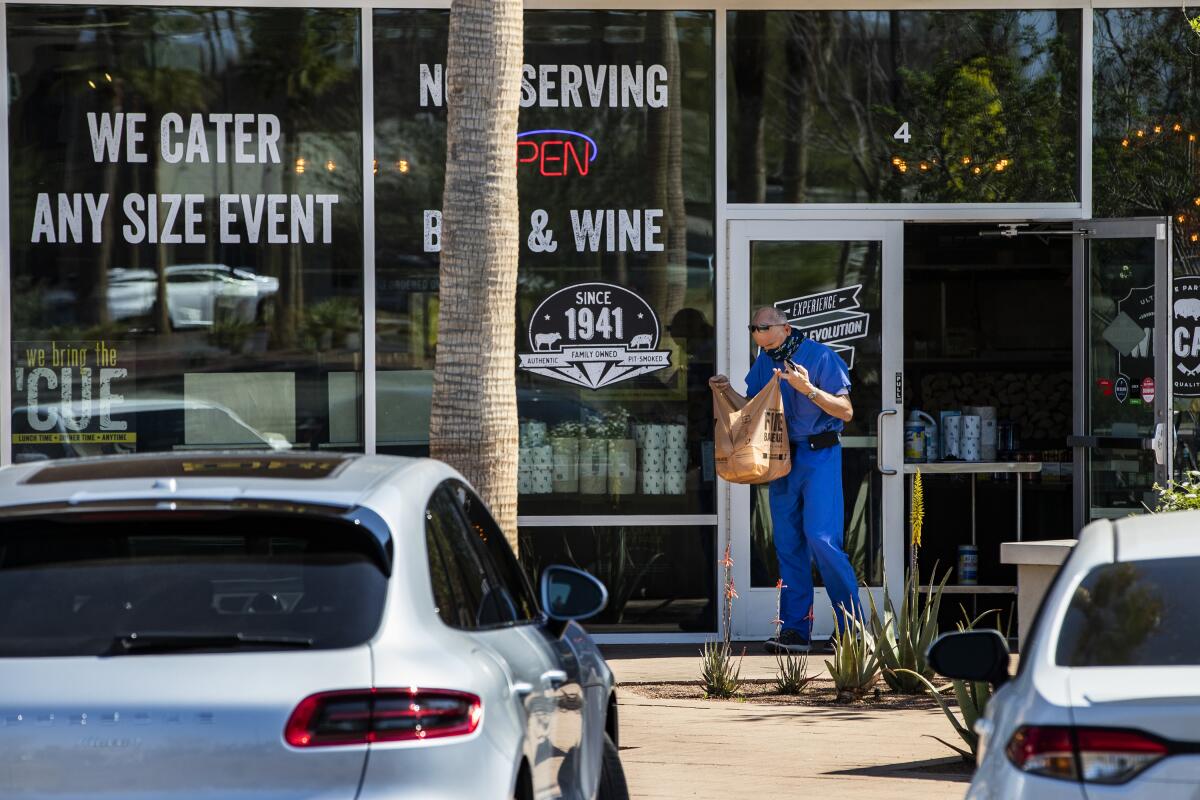
For a week or so, she lived with friends to keep her partner safe. Now, she has moved home — sort of. She goes back-and-forth between the guest room and office via sliding glass doors to the backyard. She does not venture into any other part of the house.
“She makes me meals or brings me water,” Weaver said of her partner. “She leaves it at the door. One day, she was gone, and I was hungry.”
The solution? A Chipotle Mexican Grill order. Delivered. Because the kitchen was out of bounds.
Business, she said, has improved some. April has been looking up. A generous donor gave her $5,000, which will pay for 1,000 meals for people in need. “I cried,” she said. She’s been advertising a special deal that’s brought in supportive customers: “Buy a meal and we’ll feed the homeless a meal.”
She paused. Clarified. “We’ll feed them regardless.”
More to Read
Sign up for Essential California
The most important California stories and recommendations in your inbox every morning.
You may occasionally receive promotional content from the Los Angeles Times.
